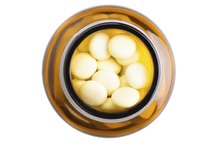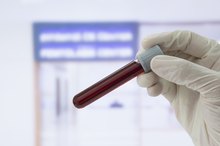Thalassemia is an inherited disease in which the body makes abnormal hemoglobin 1.* Hemoglobin is composed of two alpha and two beta subunits. A deficiency in either type is abnormal and leads to thalassemia 1.* The altered hemoglobin is produced within red blood cells, which are then destroyed at an abnormally frequent rate. Since the red blood cells use the hemoglobin to carry oxygen throughout the body, an athlete with thalassemia is at a significant disadvantage 1.
If you are experiencing serious medical symptoms, seek emergency treatment immediately.
Detecting Thalassemia in Athletes
An athlete with any of the forms of thalassemia will present with symptoms of anemia 1. However, this anemia does not respond to iron supplementation, and if the athlete is tested, iron levels will be normal.** Further blood testing will also reveal an imbalance between the two subunits which compose hemoglobin.
Mild Thalassemias Compatible with Athletic Activity
What Is the Difference Between L-Carnitine & Acetyl-L-Carnitine?
Learn More
Some thalassemias do not produce many, if any, symptoms. Persons with alpha- or beta-thalassemia minor, in which only one of the genes responsible for hemoglobin production is affected, may only display mild anemia with slight fatigue 1.** Persons with either of these thalassemias may be able to participate in athletic activity without serious consequence, upon the advisement of a physician.
Severe Thalassemias Incompatible with Athletics
Alpha-thalassemia major is a severe form that is incompatible with life; fetuses usually die in utero 1. Beta-thalassemia -- intermedia and major -- may be treated with blood transfusions 1. Over time, these transfusions cause excess iron to accumulate in the body. Desferrioxamine is administered either intravenously or subcutaneously to remove the iron and to protect the organs of the body from being damaged. Persons with these types of thalassemia most likely will not be able to participate in vigorous athletics 1.**
Precautions for Athletes with Thalassemia
What Causes a Low Blood Count?
Learn More
Since this disease is genetic, there is no way to completely eliminate it. Thus, precautions must be taken to prevent the athlete from life-threatening complications. Athletes should be carefully observed at all times. Hydration is the primary measure of prevention, especially with outdoor activities. Those with severe thalassemias should avoid contact sports and limit heavy exertion. Also, high-altitude activities, including flight in pressurized cabins, is highly discouraged.
- Since this disease is genetic, there is no way to completely eliminate it.
- Also, high-altitude activities, including flight in pressurized cabins, is highly discouraged.
Related Articles
References
- How Do People Get Thalassemia?
- "ACSM's Primary Care Sports Medicine"; Douglas B. McKeag and James L. Moeller; 2007
- "Sports Medicine"; Anthony A. Schepsis and Brian D. Busconi; 2006
Writer Bio
Sandra Richards has been writing since 1998 and has been published in the "Journal of Perinatology," the "Journal of Biological Chemistry" and other scientific publications. She holds bachelor's degrees in natural science and theology from Oakwood University, and is pursing a Doctor of Medicine and a Doctor of Philosophy in biochemistry from Loma Linda University.








